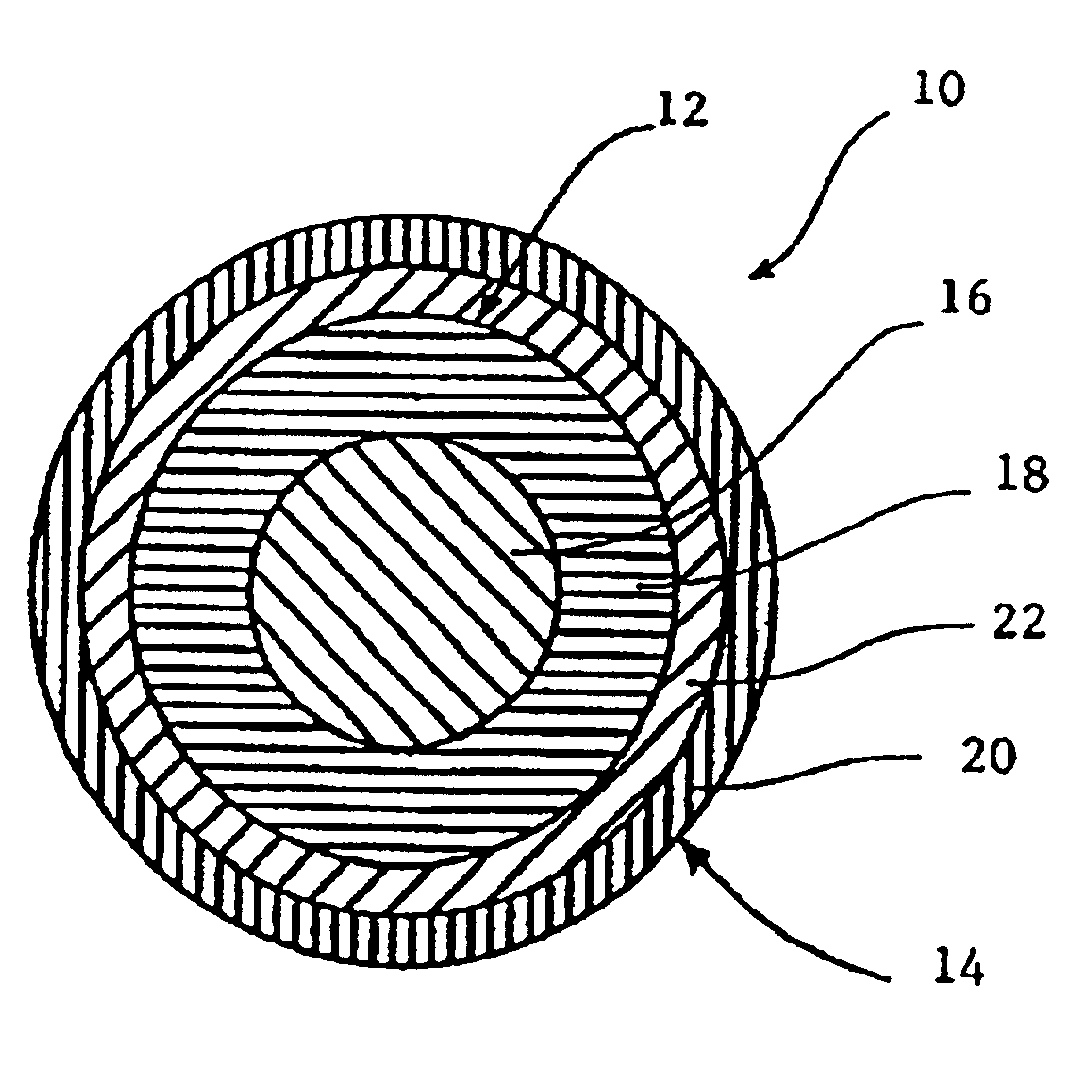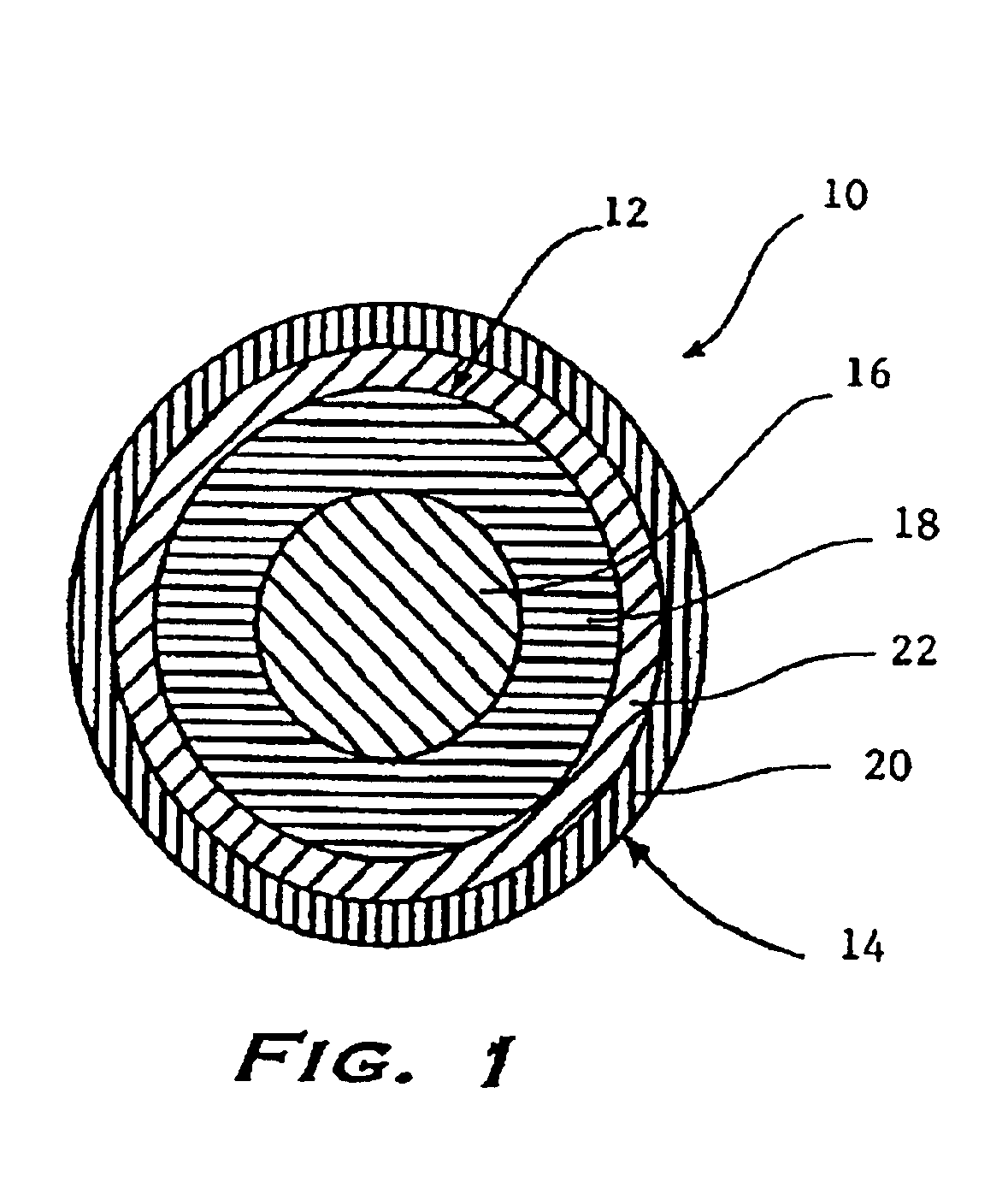Thin-layer-covered multilayer golf ball
a golf ball and multi-layer technology, applied in the field of golf balls, can solve the problems of poor playing characteristics, difficult manufacturing of wound balls, and limited playing characteristics, and achieve the effects of improving playing characteristics, improving playing characteristics, and improving playing characteristics
- Summary
- Abstract
- Description
- Claims
- Application Information
AI Technical Summary
Benefits of technology
Problems solved by technology
Method used
Image
Examples
example
[0128]Two golf balls were prepared according to the present invention and are designated VDC45 and VDC48 in Table I below. The VDC golf balls contained a core formed of a 1.0-in-diameter solid center and an outer core layer having a thickness of 0.275 in to form a core having an outer diameter of 1.55 in. The core was surrounded by an inner cover layer having a thickness of 0.035 in and an outer cover layer having a thickness of 0.030 in, to provide a golf ball outer diameter of 1.68 in. A control golf ball was prepared according to conventional technology. The control ball was formed of a solid core having a diameter of 1.550 in, an inner cover layer having a thickness of 0.035 in, and an outer cover layer having a thickness of 0.030 in, to provide a golf ball outer diameter of 1.68 in. The center compositions for both golf balls are presented below in Table I.
[0129]
TABLE ICenter CompositionVDC45VDC48ControlCB23100.0100.0100.0zinc diacrylate25.0525.0527.0zinc oxide5.265.264.3di-tol...
PUM
| Property | Measurement | Unit |
|---|---|---|
| outer diameter | aaaaa | aaaaa |
| moment of inertia | aaaaa | aaaaa |
| specific gravity | aaaaa | aaaaa |
Abstract
Description
Claims
Application Information
 Login to View More
Login to View More - R&D
- Intellectual Property
- Life Sciences
- Materials
- Tech Scout
- Unparalleled Data Quality
- Higher Quality Content
- 60% Fewer Hallucinations
Browse by: Latest US Patents, China's latest patents, Technical Efficacy Thesaurus, Application Domain, Technology Topic, Popular Technical Reports.
© 2025 PatSnap. All rights reserved.Legal|Privacy policy|Modern Slavery Act Transparency Statement|Sitemap|About US| Contact US: help@patsnap.com


